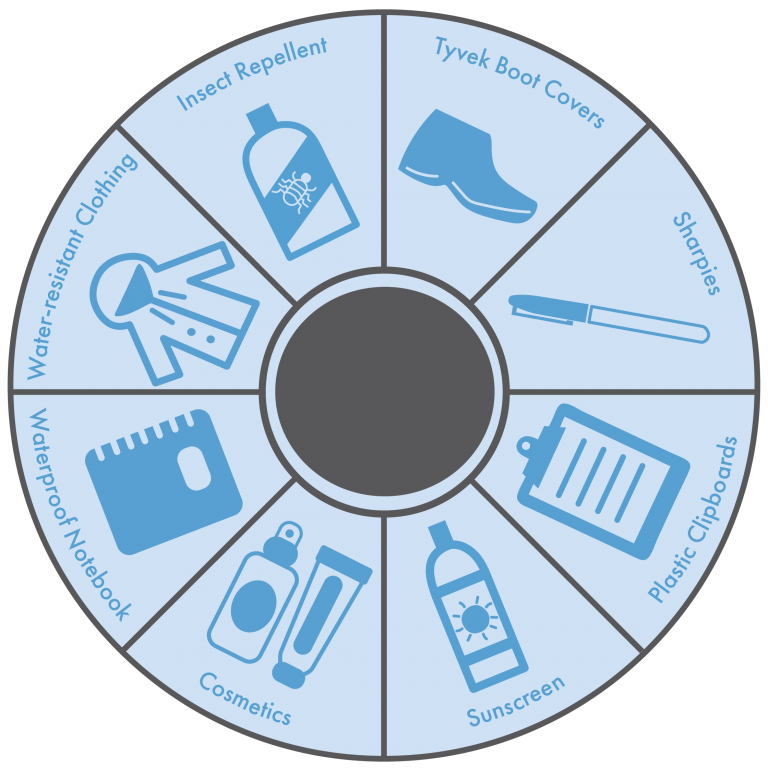The EPA has issued final drinking water standards for six types of poly- and perfluoroalkyl (PFAS) compounds. DC Water is committed to meeting the regulations and providing high quality drinking water.
Background

On April 10, 2024, the Environmental Protection Agency (EPA) issued drinking water regulatory standards for six compounds, know collectively as PFAS.
The standards individually regulate the maximum allowed levels of Perfluorooctanoic Acid (PFOA) and Perfluorooctanesulfonic acid (PFOS) in drinking water and regulate four other PFAS compounds, including GenX, as a mixture with a new Hazard Index (HI). A hazard index is a tool used to evaluate combined risk from exposure to a mixture of contaminants.
For more information about the standards, please visit https://www.epa.gov/sdwa/and-polyfluoroalkyl-substances-pfas.
DC Water’s current test results from samples collected over the past two years are below the Maximum Contaminant Levels (MCLs) and Hazard Index.
What are PFAS?
PFAS are a group of over 6,000 man-made chemicals that have been manufactured and used in home consumer products such as carpets, clothing, food packaging, and cookware since the 1940s. PFOA and PFOS have been the most extensively produced and studied.
PFAS are used in many applications because of their unique physical properties such as resistance to high and low temperatures, resistance to degradation, and nonstick characteristics. PFAS have been detected worldwide in the air, soil, and water. Due to their widespread use and persistence in the environment, most people in the United States have been exposed to PFAS. U.S. EPA has determined there is evidence that continued exposure above specific levels to certain PFAS may cause adverse health effects.
The science around these chemicals is evolving. Scientists are hard at work understanding the chemicals, their risk to human health, and how to mitigate that risk.
Regulatory Requirements and Timeline
EPA says the final rule requires public water systems to:
- Monitor for these PFAS and have three years to complete initial monitoring (by 2027), followed by ongoing compliance monitoring. Water systems must also provide the public with information on the levels of these PFAS in their drinking water beginning in 2027.
- Public water systems have five years (by 2029) to implement solutions that reduce these PFAS if monitoring shows that drinking water levels exceed these MCLs.
DC Water Path Forward
Locally, water utilities and military establishments began testing for PFAS in 2021 using the new EPA approved methods. Earlier laboratory analytical methods had minimum reporting limits of 4 ppt or higher, resulting in no detects for the Potomac River supplied water treatment plants. New EPA approved methods have minimum report levels of 2 ppt that are detecting PFAS more frequently.
The table below shows the results from 31 samples that were collected from water delivered by the Washington Aqueduct from August 2021 to April 2025.
We are voluntary monitoring on a quarterly basis, and results will be posted in the table below as they are received.
|
Chemical Group |
Average |
Range |
Method Reporting Limit |
EPA's Maximum Contaminant Level Goal (MCLG) |
EPA's Maximum Contaminant Level (MCL) |
|
Perfluorooctanoic acid (PFOA) |
1.1 ppt |
Non-detect - 3.8 ppt |
1.7 - 2.2 ppt |
Zero |
4.0 ppt |
|
Perfluorooctanesulfonic acid (PFOS) |
1.7 ppt |
Non-detect - 3.8 ppt |
1.7 - 2.2 ppt |
Zero |
4.0 ppt |
| Perfluorohexanesulfonic acid (PFHxS) |
0.1 ppt |
Non-detect - 2.1 |
1.7 - 2.2 ppt |
10 ppt |
10 ppt |
|
Perfluorononanoic acid (PFNA) |
Non-detect |
All non-detect |
1.7 - 2.2 ppt |
10 ppt |
10 ppt |
|
Hexafluoropropylene oxide (HFPO) dimer acid and its ammonium salt (GenX) |
Non-detect |
All non-detect |
1.7 - 2.2 ppt |
10 ppt |
10 ppt |
| Mixtures containing two or more of PFHxS, PFNA, HFPO-DA, and PFBS |
0.01 |
0 - 0.21 |
N/A |
Hazard Index* = 1 (unitless) |
Hazard Index* = 1 (unitless) |
ppt = parts per trillion
*The Hazard Index is a tool used to evaluate potential health risks from exposure to chemical mixtures. The hazard index for PFAS is the combination of Perfluorononanoic acid (PFNA), Perfluorobutanesulfonic acid (PFBS), Hexafluoropropylene Oxide (HFPO) Dimer Acid and its Ammonium Salt (GenX) ratios of concentration in the sample to the level determined not to cause health effects and is 1.0.
DC Water also monitored PFAS under EPA's Unregulated Contaminant Monitoring Rule 5 (UCMR5) in 2024. The UCMR5 method reporting limits were higher than our voluntary monitoring (indicating the testing was not as sensitive), and therefore not included in the above summary table. To access our UCMR5 results, please click here.
DC Water works with industry experts, scientists, regulators, and industry peers to understand health risks, how to mitigate them, and how to communicate them to everyone. These groups are knowledgeable in detection and treatment technologies for many contaminants; however, studies of this class of chemicals are relatively new. We look to EPA for further guidance as the science progresses.
- DC Water is following the guidance of EPA Region 3, our regulating authority.
- We will take necessary actions to meet the federal regulations.
- DC Water continues to stress the importance of source water protection and its role in keeping drinking water supplies safe. Protecting drinking water sources and keeping PFAS away from water supplies is a priority.
- Water utilities are “passive receivers” of PFAS. They do not produce or manufacture PFAS. Instead, these chemicals are present in source waters that are treated to produce drinking water.
Customer Action
Customer action is not required. Results greater than the Health Advisory Levels do not mean that there is an emergency or violation. DC Water will advise if the circumstances change. At this time, EPA is not recommending bottled water for communities based solely on concentrations of these chemicals in drinking water that exceed the health advisory levels. If you are concerned about potential health effects, from exposure to PFASs above Health Advisory Levels, EPA encourages you to contact your doctor or health care professional.
Steps to reduce exposure to PFAS:
- Support efforts to protect drinking water sources and keep PFAS out of water supplies.
- Cook with stainless steel, cast-iron, glass, or ceramics. Don’t use nonstick cookware.
- Read ingredient lists and choose products without PTFE.
- Look for coats, hats, and boots labeled water-resistant. They’re less likely to have PFAS than waterproof products.
- Make popcorn on the stove or in an air popper instead of microwave bags.
- Steer clear of ordering food in grease-resistant wrappers or containers.
- Avoid carpets and upholstery treated to be stain or water-resistant; decline stain treatment.
- Ask manufacturers if their products contain PFAS. These chemicals are often not listed.
For more information, please call DC Water’s Office of Drinking Water Quality and Technology at 202-612-3440 during business hours, email drinkingwater@dcwater.com or refer to the resources below.
Resources:
- EPA’s PFAS Information: https://www.epa.gov/pfas
- EPA’s Questions and Answers: Drinking Water Health Advisories for PFOA, PFOS, GenX Chemicals and PFBS: https://www.epa.gov/sdwa/questions-and-answers-drinking-water-health-adv...
- Center for Disease Control (CDC): https://www.cdc.gov/biomonitoring/PFAS_FactSheet.html
- American Water Works Association (AWWA): https://drinktap.org/Water-Info/Whats-in-My-Water/Per-and-Polyfluoroalky...
- Frequently Asked Questions https://www.dcwater.com/PFAS


